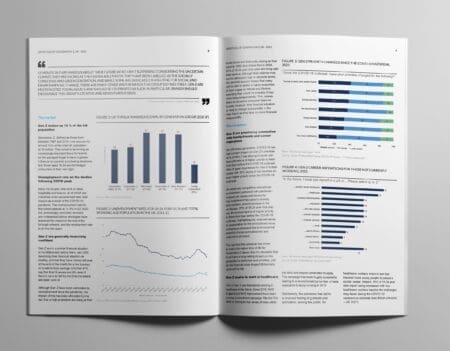If asked to name current diet trends, most could rattle off any number of no/low/free-from diets currently circulating American culture – no processed sugars, low-carb, dairy free, all protein, Paleo, Raw, Flexitarian. The list goes on.
One of the latest nutrition fads has evolved out of the popular gluten-free diet – experimenting with grain-free foods. Adopters of grain-free diets may be avoiding grains as part of the Paleo diet, while others may be trying to avoid gluten or cope with digestive health concerns. Grain-free benefits from a perception of health, viewed as a less processed diet and fits with consumers’ gradual shift away from processed foods. Some 43% of US consumers are planning to eat less processed food in the next year according to Mintel’s American Lifestyle 2014 report. Criticism of typical western diets being highly dependent on grains, in particular refined processed grains, has contributed to some of the negative stigma attached to grains. Wheat takes the most heat, given 20% of the world’s calories are estimated to come from wheat, more than any other single food. Only a handful of grains actually contain gluten, including all kinds of wheat, rye and barley, leaving plenty of other gluten-free grain options to choose from. However, grain-free is starting to emerge as the next generation of (and healthier alternative to) gluten-free.
Non-grains make great flour: almond, pea and coconut
134% increase in the launch of bakery products with non-grain flours since 2010
The health benefits of completely eliminating grains from one’s diet have not been validated, and although the use of grain-free claims on product launches is currently very niche, 2014 saw an increase in activity in launches of products with grain-free references. Products utilizing these claims are mostly found on snack bars, breakfast cereals, crackers and flour/baking mixes. According to Mintel’s Global New Products Database (GNPD), since 2010 there has been a 134% increase in the launch of bakery products with non-grain flours. Aside from a rise in use of alternative grains and seed flours, non-grain ingredients from nuts, fruit and vegetables are also being ground into flours, with almond, peanut, coconut, pea, soybean and potato cropping up more and more. Some of the better-known ingredients, with almond, chickpea and cassava leading the way.
Newer entrants to the market, such as coconut flour, have really taken off following the widely enjoyed trend for all things coconut. As well as being grain-free, coconut flour is high in fiber and a good source of protein. It is also highly absorbent which means smaller quantities are required for baking, helping keep the carbohydrate content low and coconut’s natural sweetness means less sugar or sweeteners are required. Small US-based start-up companies have launched varieties of grain-free flours, including apple, squash and sweet potato providing alternatives for “grain-haters”.
Banana flour for better digestive health
More recently, bananas are being processed into flour, fitting into the grain-free trend. Green bananas are processed prior to the natural ripening process where natural sugars and flavors develop, which means the flour shouldn’t taste strongly of bananas. Banana flour is gluten-free, and because of its high starch content, is said to be easy to replace regular flour by simply taking any recipe and using 25% less banana flour than the suggested quantity of flour.
The unique nutritional point of differentiation of banana flour is its high resistant starch content. Green bananas are one of a handful of foods, alongside under-cooked pasta, cooked and cooled potato and rice that contain resistant starch. Resistant starch is different to other starches in its behavior in that it is not digested in the small intestine but rather it passes through to the large intestine where it acts like dietary fiber imparting benefits including assisting the production of good bacteria and digestive health. For those who fall short of daily fiber intake, including just over a quarter of US adults who say they are cutting back on baked goods/desserts because they are not good for their health, according to Mintel’s Baking and Dessert Mixes US 2014 report, food and drinks rich in fiber or resistant starch can help make up this shortfall.







































